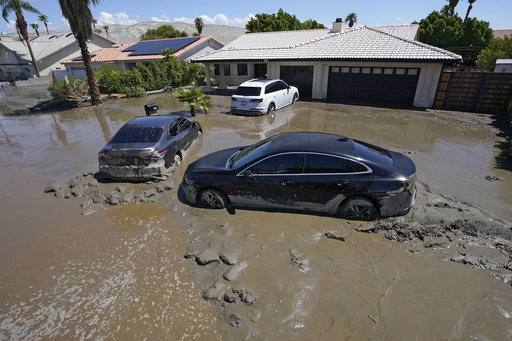LOS ANGELES (AP) — Former Hurricane Hilary was actually no longer a tropical storm but essentially had the same impact when its destructive remnants entered California last August, according to a new National Hurricane Center report.
Damage from Hilary was estimated at $900 million in the United States. Three deaths were directly related to the storm, including two in Mexico and one that occurred in California when a woman was washed away in her home.
Hurricane Hilary moved north off Mexico’s Pacific coast and weakened to a tropical storm before making landfall in northern Baja California in Mexico, where its center became less defined as it encountered mountainous terrain and other atmospheric conditions, the report said.
“As a result, the storm lost tropical characteristics and degenerated to a post-tropical cyclone over northern Baja California,” the new analysis said.
At the same time, an area of low pressure to the northwest near the coast of Southern California quickly absorbed remnants of Hilary and the new system continued on over the southwestern U.S., according to the report released this month. Forecasters noted at the time that Hilary was becoming diffuse and difficult to track, and it was unclear if the low pressure area was Hilary or a new system.
The new conclusion came from a routine post-cyclone examination of real-time data and other data that was not immediately available, the report said.
“Ultimately, these post-analysis changes do not diminish the significant wind impacts that Hilary and its remnants brought to the southwestern United States.” the report said.
“Although the center of Hilary did not move into the United States, the large wind field associated with the tropical storm near the end of its life cycle resulted in sustained tropical-storm-force winds at some inland United States locations,” it said. “Therefore, Hilary is still considered to have impacted the United States as a tropical storm.”
Significant damage included flooded neighborhoods, especially in Riverside County’s Coachella Valley, and destruction of roads. Rain formed an ephemeral lake in Death Valley National Park that still persists, with replenishment by a recent atmospheric river.



